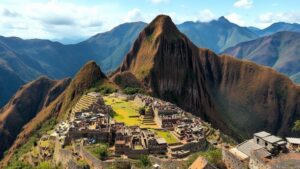Exploring the cultural significance of ancient city alignments with solar events.
Exploring the Cultural Significance of Ancient City Alignments with Solar Events
Throughout history, ancient civilizations have exhibited a profound understanding of celestial phenomena, leading to the deliberate alignment of their cities with solar events. This practice not only showcased their architectural prowess but also reflected their religious beliefs, agricultural practices, and social structures. This article delves into the cultural significance of these alignments, highlighting notable examples, and discussing their impact on ancient societies.
The Connection Between Solar Events and Ancient Cultures
Solar events, such as solstices and equinoxes, played a crucial role in the agricultural calendars of ancient civilizations. changing positions of the sun marked seasons, guiding farmers on when to plant and harvest crops. Cultures from the Egyptians to the Maya integrated these solar phenomena into their spiritual beliefs and everyday practices, thus intertwining astronomy with cultural identity.
Notable Examples of City Alignments
Several ancient cities are particularly renowned for their alignments with solar events, illustrating the cultural significance of this practice. Here are a few noteworthy examples:
- Stonehenge, England: Dating back to approximately 2500 BCE, Stonehenge is aligned with the sunrise of the summer solstice and the sunset of the winter solstice. This alignment suggests that it served as a ceremonial site for marking seasonal changes.
- Chichen Itza, Mexico: The Pyramid of Kukulcán, built by the Maya around 1000 CE, features a remarkable alignment with the sun during the equinoxes. As the sun sets, shadows cast create the illusion of a serpent slithering down the staircase, emphasizing the importance of solar worship in Maya culture.
- Teotihuacan, Mexico: Known as the City of the Gods, Teotihuacan’s construction around 100 CE reflects a systematic alignment with celestial events. The Pyramid of the Sun is positioned in such a way that its orientation aligns with the setting sun during the equinoxes.
- The Great Pyramids of Giza, Egypt: Built around 2580-2560 BCE, the pyramids are aligned with the cardinal points and have connections to solar orientations. specific placement of the pyramids is linked to the heliacal rising of Sirius, marking important agricultural events.
The Role of Astronomy in Cultural Identity
Alignments with solar events provided these ancient cultures with a framework for understanding their environment, fostering a deep connection with the cosmos. Astronomy was not only a scientific endeavor but also a cultural instrument that helped to solidify a communitys identity. For example:
- In many Native American cultures, solar events were crucial for rituals and storytelling, linking them to their ancestors and the cosmos.
- In ancient Greece, the alignment of temples with solar phenomena was indicative of the societys philosophical and religious understanding, as seen in structures like the Parthenon.
Symbolism and Rituals Associated with Solar Events
The symbolism associated with solar events often conveyed themes of rebirth, fertility, and renewal. solar alignment of ancient cities facilitated various rituals and events, which were integral to their cultural practices. For example:
- The Mayans held elaborate ceremonies during the equinoxes, celebrating the balance of light and dark.
- The Incas also celebrated Inti Raymi, a festival honoring the Sun God Inti, which coincided with the winter solstice.
Modern Implications and Discoveries
Today, researchers continue to delve into the connections between ancient city alignments and solar events. Advances in technology, such as satellite imaging and computer simulations, allow for the discovery of new alignments that were previously obscured. e findings reinforce the idea that ancient peoples possessed significant astronomical knowledge and used it to shape their societies.
Conclusion: The Lasting Legacy of Ancient Solar Alignments
The cultural significance of ancient city alignments with solar events is a prime example of how astronomy shaped human civilization. These alignments provided a means to understand, celebrate, and integrate celestial cycles into the fabric of daily life. As we continue to explore and uncover the intricacies of these ancient practices, we gain a deeper appreciation for the sophistication of our ancestors and their inextricable link to the cosmos.
Actionable Takeaway: Understanding the cultural significance of solar alignments can enhance our appreciation for ancient cultures and their relationship with nature. Exploring local historical sites or engaging in observational astronomy can foster this connection to both our past and celestial events today.


